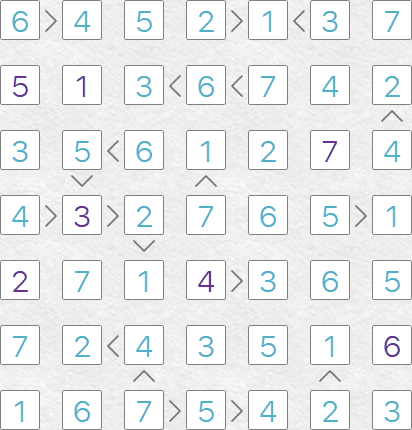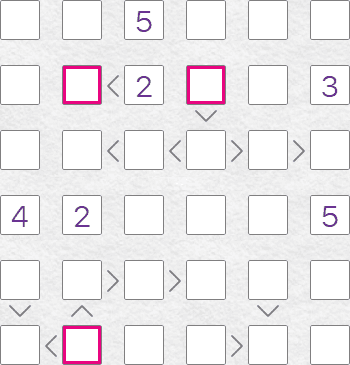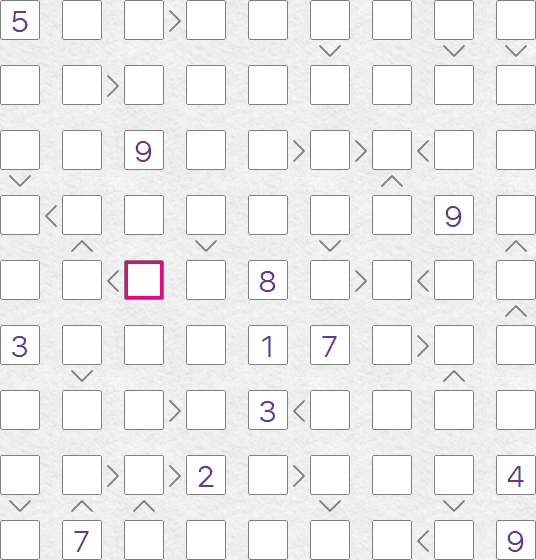This is one of our easy puzzles. The best place to start with a Futoshiki puzzle is to look at
inequalities where you are given one side already, or where you have a few inequality signs chained together.
I have highlighted three cells that we can fill in straight away. Look at the highlighted cell to the
left of the '2', the < tells us it's smaller than 2, so it has to be 1! That was easy!
The highlighted cell to the right of the '2' is a little harder. By chaining the inequality signs, we
know that the highlighted cell must be bigger than 5 other cells. All 5 of those cells are in the same
row, so we also know that none of them can be duplicated, so this highlighted cell must be a '6'.
Once you have filled in all the obvious cell, you will have to start using pencil marks. The highlighted
cell at the bottom of the puzzle is a good candidate. We know it has to be bigger than 4 other cells, but
you need to be careful, they're not all in the same row/column, some of those might be duplicated, i.e.
with just this information, the smallest this cell could be is 4, and not 5 as you might expect. However,
the existing '2's in the puzzle mean that this cell can't be 4, so this cell must be 5 or 6.
 Futoshiki leaderboard
Futoshiki leaderboard

